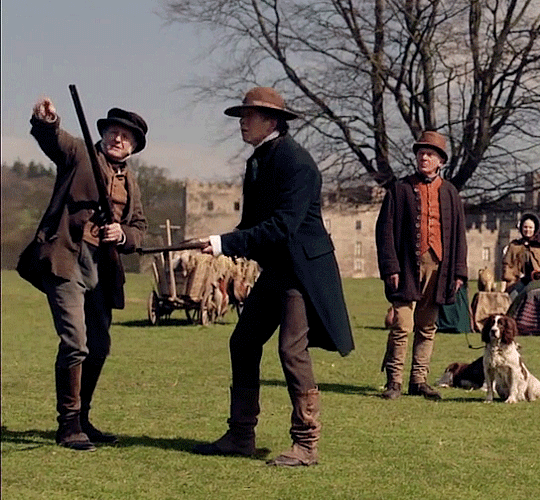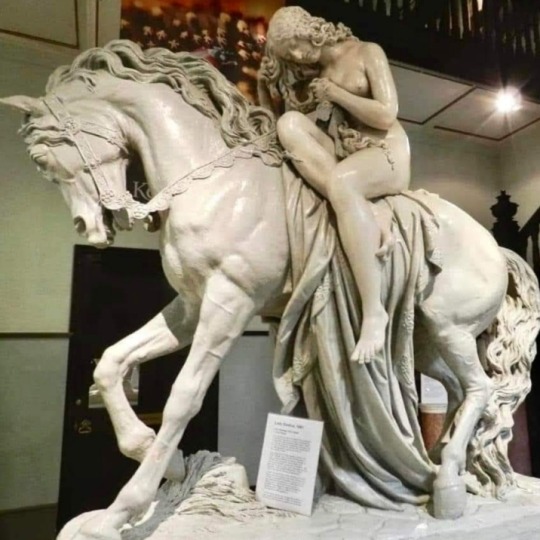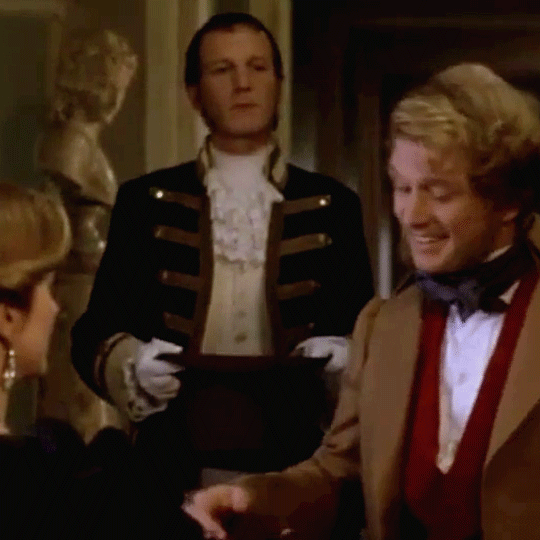#The Earls of Mercia
Explore tagged Tumblr posts
Text
The Danish King's Enemy is this week's Kindle Countdown Deal at 99p/99c on Amazon UK/US, and available to read with Kindle Unlimited
The Danish King's Enemy is this week's Kindle Countdown Deal at 99p/99c on Amazon UK/US, and available to read with Kindle Unlimited #bookbargain #TalesOfMercia
Here’s the blurb: Every story has a beginning. Leofwine has convinced his king to finally face his enemies in battle and won a great victory, but in the meantime, events have spiralled out of control elsewhere. With the death of Olaf Tryggvason of Norway, England has lost an ally, and Leofwine has gained an enemy. And not just any enemy. Swein is the king of Denmark, and he has powerful…

View On WordPress
0 notes
Text










James Wilby & Sporting, Part Two: 1. Victoria (2016): shooting 2. Maurice (1987): cricket 3. Poirot (2008): snooker 4. An Ideal Husband (1999): golf 5. Shadows In The Sun (2009): biking 6. Bertie And Elizabeth (2002): shooting 7. Bertie And Elizabeth (2002): tennis 8. You, Me, And It (1993): rugby 9. Lady Godiva (2008): sword fighting 10. A Summer Story (1988): biking
#James Wilby#James Wilby and sports#Victoria#Sir Piers Gifford#Maurice 1987#Maurice Hall#Poirot#Andrew Restarick#An Ideal Husband#Oscar Wilde#Sir Robert Chiltern#Shadows In The Sun#Robert#Bertie And Elizabeth#King George VI#You Me And It#Charles Henderson#Lady Godiva#Earl of Mercia#Leofric#A Summer Story#Frank Ashton
67 notes
·
View notes
Text

SCULPTURE: “LADY GODIVA” by John Thomas (1813 - 1862), UK.
According to the legend dating back to at least the 13th century, Lady Godiva (b. around 1040 — d. between 1066 and 1086), a countess whose name (Godgifu or Godgyfu) translates from Latin as 'gift of God,' rode through the streets of Coventry, Warwickshire, England, in 11th century AD, with nothing but her long hair covering her.
This act was a condition set by her husband Leofric, Earl of Mercia, to lower taxes for the people.
She rode through the town while the inhabitants stayed indoors with windows and doors shut.
According to that legend, her husband, moved by her bravery, kept his promise and reduced the taxes.
This myth portrays Lady Godiva as possibly the first woman to use her body to defend a social cause.
Maidstone Museum, Kent
22 notes
·
View notes
Photo

Aethelred, Lord of the Mercians
Aethelred ruled as Lord of the Mercians from c. 881 to 911 and was a key military leader in the fight against Viking conquest and settlement in England. To defend Mercia, he allied himself to the powerful Kingdom of Wessex under the leadership of Alfred the Great (r. 871-899) and later married Alfred's daughter, Aethelflaed, to strengthen their alliance.
Today, Aethelred is primarily remembered as King Alfred's dutiful son-in-law or as the husband of the celebrated Aethelflaed, Lady of the Mercians. However, he was an important historical figure in his own right, who led Mercia during a time of intense conflict and transformation, which lay the foundations for the unification of England that would be completed in 927 by Aethelred's foster son, King Aethelstan (r. 924-939).
Historical Sources & Modern Depiction
Aethelred's life is documented in several contemporary sources. The Anglo-Saxon Chronicle, a chronicle recorded at Alfred's court in the 890s, and Bishop Asser's Life of King Alfred, a contemporary biography of Alfred, provide key but limited details on Aethelred's life, including his relationship with Alfred and his military campaigns. Additionally, several of Aethelred's land charters still exist, providing valuable records of his land and property transactions and his interactions with the Mercian clergy and nobility. We are also aided by the Fragmentary Annals of Ireland, a series of later medieval Irish chronicles. These annals provide insight into the later years of Aethelred's life, which were marked by illness and Mercia's defence against Norse-Irish Viking raids in Britain.
Interest in Aethelred has grown in recent years, primarily due to Toby Regbo's portrayal of him in the TV show The Last Kingdom (2015-2022), in which he is depicted as an incompetent and cowardly ruler who resents his wife. However, Bernard Cornwall – the author of The Saxon Stories, on which the show is based – admitted his portrayal of the Mercian leader was unfair to the real historical Aethelred. From the limited source material on Aethelred and his character, we see a courageous soldier and capable ruler who enjoyed a healthy relationship with Aethelflaed and was remembered by medieval chroniclers as a "man of distinguished excellence" and a "valorous earl" (Forester, 89 & Giles, 239).
Continue reading...
41 notes
·
View notes
Photo







Peter Ferdinando as the Earl of Mercia King Arthur: Legend of the Sword (2017) dir. Guy Ritchie
#king arthur: legend of the sword#king arthur and the legend of the sword#king arthur legend of the sword#ceremonial#filmgifs#userrobin#userpavlova#fyeahmovies#dailyflicks#filmedit#userconstance#usersugar#henricavyll#usersavana#userbrittany#tusercora#weloveperioddrama#useraurore#tuserbea#perioddramaedit#perioddramasource#userbbelcher#chewieblog#peter ferdinando#THE definition of a silver fox#i want him.... CARNALLY#mywork
209 notes
·
View notes
Text
In a World of Our Own {Alice Liddell x fem!reader}

Plot - You and your best friend, Alice, sneak away from your lesson and, after singing a peaceful song, you both realize your shared feelings.
Universe - Alice in Wonderland
Posted - Thursday 7th March, 2024
It was a warm sunday morning when you and your best friend, Alice, were forced to listen as her sister, Lorina, read a history book to you both.
"Edwin and Morcar, the earls of Mercia and Northumbria, declared for him." Lorina read aloud as you and Alice were sat atop a thick tree branch, creating flower crowns.
"And even Stigand..." She paused when Alice's leg dropped from the tree branch, swinging softly.
"Alice."
"Hm?" She looked down at her sister, who had interrupted her peace.
"Oh, I'm listening." Alice lifted her leg back up onto the branch and continued making her flower crown.
You covered your mouth to try and muffle your giggle. Alice looked at you with her soft blue eyes and smiled softly at you.
Oh, she was just so beautiful! She was just like an angel! Her eyes were a beautiful shade of blue and her smile was so-
Wait, what were you saying?
Lorina continued.
"And even Stigand, the archbishop of Canterbury, agreed to meet with William and offer him,"
Alice reached over to you and gently put the crown of white flowers on your head.
"The crown."
Your face immediately turned bright red at her soft touch. Unfortunately for you, Alice noticed and began giggling.
But so did Lorina.
"Alice! Y/N!" She said sternly. "Will you both kindly pay attention to your history lesson."
"I'm sorry." You said.
"But how can one possibly pay attention to a book with no pictures in it?"
"My dear children..." She closed the book for a moment to regain her composure. "There are a great many good books in this world without pictures."
"In this world perhaps."
"But in our world, the books would be nothing 𝑏𝑢𝑡 pictures." You both said in unison.
"Your world?" Lorina looked up, amused. "Oh! What nonsense. Now..."
"Nonsense? That's it Y/N!" She looked over at you, an excited grin on her angelic face.
"If we had a world of our own, everything would be nonsense. Nothing would be what it is, because everything would be what it isn't. And contrariwise, what it is, wouldn't be, and what it wouldn't be, it would. You see?"
You paused for a second to take in her monologue before replying,
"I don't think I do, Alice."
She got down from the tree branch you two were resting on and continued.
"In our world, you wouldn't say 'I don't think I do, Alice. You'd say 'Yes, dear.' "
Alice took your hand and took you to the beautiful meadow.
"In our world, cats and rabbits would reside in fancy little houses, and be dressed in shoes and hats and trousers."
She lay down in the meadow, you following her lead.
"In a world of our own..."
"All the flowers would have very extra special powers. They would sit and talk to me for hours when I'm lonely in a world of our own."
A blue bird flew by, catching Alice's attention.
"There'd be new birds, lots of nice and friendly how-de-do birds. Everyone would have a dozen bluebirds within that world of our own."
"I could listen to a babbling brook and hear a song that I could understand." She sang. You both were sat on the grass next to a clear blue river.
"I keep wishing it could be that way because our world would be a Wonderland." You both said in unison.
She looked up at you with her soft blue eyes. They glazed over with recognition and she smiled widely.
And then your lips met hers in a soft kiss.
17 notes
·
View notes
Text
Throwback Thursday: Anglo-Saxon/Anglo-Dane nobility
This throwback Thursday there is a number of character models including Alfred the great and Aethelflaed, Lady of Mercia as well as a number of Earls. The models are produced by a number of companies they are:
Victrix
Bad Squiddo Games
Gripping Beast




That is all for now, thanks for viewing my models
until next time
happy hobbying!
#gripping beast#bad squiddo games#victrix#historical wargames#wargaming#historical wargaming#saga#anglo saxon#Anglo Dane#throwback thursday
6 notes
·
View notes
Text
While rewatching season 2 of Vikings Valhalla today, I brainstormed a few possible storylines that they might pursues for season 3.
Since Olaf is already dead and he was like,, technically meant to be a major player for another 20 years, it's hard to imagine what sort of conflict they could come up with for the Norway arc, so it'll probably be something made-up, but Olaf's son Magnus will likely be back. Hopefully, they'll bring in Einar Thambarskelfir, a wealthy landowner in northern Norway, who irl brought Magnus back from Kiev after his father's death. Maybe, he'll make his play for power in Olaf's name!
They probably won't explore anything in Denmark or Sweden (especially since they just did not fill us in on anything that Knut was doing in Denmark this past season), but in England there are plenty of possibilities: they could bring in the earls of Bamburgh (and the real Uhtred the Bold, not the self-insert one from TLK), they could address the struggle to bring Mercia into the fold that they sort of/sort of did not wrap up in season 1, and there is always fucking Scotland!! I would love to see Knut put Malcolm II in his place and host that meeting with Malcolm, Macbeth, and Echmarcach mac Ragnaill that happens around 1030.
Also Knut related: I wonder if he'll be visiting Rome in season 3, because there are several actors credited as cardinals on imdb and Knut did travel to Rome irl also around 1030. If he does go to Rome, I hope we encounter Conrad II because they were like bffs (and lowkey kind of gay).
I have nothing to go off of for Freydis's plot, but over in Constantinople, I wonder if Leif will find maps leading to North America when he reaches Mariam's house. As for Harald, Kaysan, and Batu (the later two I expect will join Harald in the Varangian Guard), hopefully they'll go to Sicily with Maniakes and if we're lucky, we'll encounter William Ironarm or other Norman warlords fucking around in Italy at that time. Either that, or I'd be down for a greater focus on the political drama that is RIFE in Constantinople. I don't have high hopes that John the Orphanotrophos will show up, but if Romanos is supposed to be Romanos Diogenes, we'll have the Doukai opposing him, the fateful Battle of Manzikert, and possibly even the Komnenoi since the writers/producers only seem to care about bringing in the well known families/events rather than trying to bring lesser known but historically relevant figures to the big screen.
Somehow, they're also bringing Eirik the Red into the show, so I wonder if maybe Freydis will be returning home to Greenland, but again, this is where I'm less knowledgable, so no matter what happens I will definitely be surprised. I already know that literally all of my expectations here will be subverted; I don't know how they do it, but they manage it EVERY TIME.
#vikings valhalla#vikings valhalla season 3#knut the great#olaf ii#harald hardrada#leif eriksson#george maniakes#romanos iv diogenes#malcolm ii#netflix valhalla#freydis eriksdottir#romanos iii argyros
13 notes
·
View notes
Text
The Black family being trusted by the King so much so that they have power over Wessex, Mercia, and East Anglia (Orion, Lucius and Narcissa, Cygnus)
Fleamont is Earl of Northumbria (obviously it's gonna be Northumbria) but when he dies, for some reason, the King chooses to consider giving James Wessex and handing Northumbria to Peter, a trusted Thegn
Which PISSES REGULUS OFF bc since Sirius' exile he's been working himself to death to make sure he's fit to be Earl of Wessex when his father dies and then this Northener comes in and tries to take his title? In the most important earldom in England? No thank you.
He starts paying more attention to James when the Witan assemble to make decisions with the king (Remus is Archbishop of Canterbury too idc) but only realises that James' kindness is kind of...nice?
But Sirius was exiled to Scotland, where he made friends with the Scottish king, who were very close to the Potters, which managed to dull the hatred between Scotland and north England while also allowing platonic prongsfoot
Basically Anglo Saxon au without the period typical misogyny, slavery, and homophobia
30 notes
·
View notes
Text
Lady Godiva
(Lady Godiva Efsanesi İngiltere kültürüne ait olup İngiltere Lordu Mercia Kontu olan Earl Leofric ile karısı Mercia Kontesi Lady Godiva arasında geçen bir iddiaya dayanmaktadır. )
Lady Godiva, hem sadakatin, hem başkaldırının, hem tutkunun, hem şefkatin hikâyesidir. 11. yüzyılda İngiltere'nin Coventryhalkı, uygulanan ağır vergiler dolayısıyla isyan içindeydi. Vergileri arttıran Lord Leofric'in eşi Lady Godiva halktan yana düşünmektedir. Lord Leofric'i vergileri indirmesi yönünde ikna etmeye çalışır. Eşinin ısrarından rahatsız olan Lord Leofric, eşine asla kabul edemeyeceğini düşündüğü bir teklif yapar; Lady Godiva'nın at sırtında, sadece saçları ile örtünerek, Coventry sokaklarını boydan boya geçmesi koşuluyla vergi yükünü azaltacağını söyler. Lady Godiva'nın buna cesaret edemeyeceğine inanan Lord, eşinin baskılarını bu şekilde kıracağını düşünmüştür. Fakat, Lady Godiva atının üzerinde bu geçişi yapar. Bu durumu öğrenen halk, dükkânlarını kapatarak evlerine çekilir. Lady'nin onurunu korumak adına insanlar sokağa çıkmazlar, hiçbir pencerenin perdesi bile aralanmaz. Lady'nin bu cesur davranışı karşısında, ona duydukları derin saygıyı gözlerini kapatarak gösterirler.
Lord Leofric eşine verdiği sözü tutar ve vergileri indirir. Bu olaydan sonra Lady Godiva'nın cesareti, kararlılığı, saflığı, tutkusu ve güzelliği pek çok sanatçıya ilham kaynağı olmuş, tarih boyunca çok sayıda farklı tarzlarda resmedilmiş ve heykellere konu olmuştur

Maureen O'Hara'nın oynadığı 1955 yapımı bir film ve Maureen Lipman'ın oynadığı 1985 yapımı bir televizyon serisi de dahil olmak üzere çok sayıda yapıma uyarlanmıştır.

8 notes
·
View notes
Text
Lady Estrid is this week's kindle deal but who were her family ? #KindleDeal #HistFic
Lady Estrid is this week's kindle deal but who were her family ? #KindleDeal #HistFic

View On WordPress
0 notes
Text















James Wilby + Historical Portrayals: .2nd Lt. Siegfried Lorraine Sassoon (Regeneration) .King George VI (Bertie & Elizabeth) .George Boscawen, 3rd Viscount Falmouth (Poldark) .Bruce Ismay (Titanic) .Ofonius Tigellinus (Ancient Rome: The Rise and Fall of an Empire: Nero) .Edward Russell Thomas (De-Lovely) .John Denby Wheater (The Great Train Robbery) .Brendan Bracken (Churchill's Secret) .Lord Howard Staunton (The Chess Game/La Partie d'echecs) .Herbert Spencer (George Eliot: A Scandalous Life) .Leofric, Earl of Mercia (Lady Godiva) .Judge Carl Aarvold (The Duke) .Charles Lightoller (Words Of The Titanic) .Helmuth James von Moltke (Witness Against Hitler) .Lord Louis Mountbatten (The Last Days of The Raj)
#James Wilby#Historical Roles#Siegfried Sassoon#Regeneration#King George VI#Bertie And Elizabeth#Lord Falmouth#Poldark#Bruce Ismay#Titanic#Titanic 2012#Ofonius Tigellinus#Ancient Rome#The Rise And Fall Of An Empire#Edward Thomas#De-Lovely#John Wheater#The Great Train Robbery#Brendan Bracken#Churchill's Secret#Herbert Spencer#George Eliot: A Scandalous Life#Leofric#Lady Godiva#Judge Carl Aarvold#The Duke#Charles Lightoller#Words Of The Titanic#Helmuth James Von Moltke#Witness Against Hitler
25 notes
·
View notes
Text
"Face Fright"

On "Peeping Tom" -- In A Concise Dictionary of Phrase and Fable (1993), B. A. Phythian writes:
Leofric, Earl of Mercia and one of the most powerful men in England during the first half of the 11th century, imposed certain taxes which his wife, Lady Godiva, patroness of Coventry, asked him to remove. He promised to do so if she would ride naked through the city, which she accordingly did in 1040.
But most medieval scholars agree that the ride never took place. Daniel Donoghue, professor of English and American literature and language, explains that contemporary historians did not consider Godiva particularly noteworthy; what little was written about her at the time mentioned her merely as the wife of a famous man. He points out that two centuries after her death, chroniclers in the Benedictine abbey of St Albans inserted a fully developed narrative into their Latin histories: the legend of Lady Godiva was born.
So it starts with Flores Historiarum (Flowers of History – completed in 1235?), by Roger de Wendover (died 1236), a monk at the abbey of St Albans. And goes from there.
An edict forbidding the town’s citizens to gaze on Godiva during her ride was added to the legend.
The creation of Tom specifically appears to originate with a 17th century misreading of a 16th century painting. The painting that the soldiers describe is most probably Lady Godiva (1586), by Adam von Noort. It shows Lady Godiva riding through the empty streets, and a bearded man looking out an upstairs window from a building on the right-hand side. This man is probably Leofric, but his identity is not obvious, which might have contributed to the emergence of the figure of the voyeur.
Eventually, the voyeur was provided with an occupation; in the above-mentioned book, Daniel Donoghue explains:
As a tailor he would conveniently be equipped with an awl to bore a viewing hole, but the occupation would be appropriate for other reasons as well. Proverbially, tailors were thought to be less than fully men even to the point of suggesting their emasculation (“Nine tailors make the man”). So, for example, when a tailor in a fairy tale accomplishes something heroic, his deficient manhood throws the magical transformation into greater relief. In addition, the tailor’s business of making clothes, in contrast to Godiva’s nakedness, may have added to the thematic appeal.
So. There you go. Peeping Tom. Expanding the universe in crevices and nooks within the stories we sell to ourselves built off of small titillation and moralizing.
#Archie Comics#Betty Cooper#Veronica Lodge#Locker room#Intimates#Balloon#Eyes#Peeping Tom#Etymology#Stan Goldberg#1975
10 notes
·
View notes
Text

7. Veto - Heaven Shall Burn (Melodic Death Metal/Metalcore, 2013)
Art by John Collier "Lady Godiva", ca 1898
Lady Godiva, was a late Anglo-Saxon noblewoman who is relatively well documented as the wife of Leofric, Earl of Mercia, and a patron of various churches and monasteries. Today, she is mainly remembered for a legend dating back to at least the 13th century, in which she rode naked – covered only in her long hair – through the streets of Coventry to gain a remission of the oppressive taxation that her husband, Leofric, imposed on his tenants. (- from Wikipedia)
#metal#lady godiva#heaven shall burn#music#melodic death metal#metalcore#john collier#art#artwork#painting#lady#horse#riding#noble#oil#history#facts#cover#myth#legend
9 notes
·
View notes
Note
Ooh, I find the history of names quite interesting! How about the name Carrie?
Carrie is a diminutive of Caroline, which is a French descendant of the Germanic and decidedly masculine name Karl meaning "man" or "free man," which is in contrast to Earl, meaning "nobleman." This makes it a relative, of course, of names like Carla and Carlos but also Charles, Charlemagne, Charlene, Charlotte, and Chuck.
Caroline's history seems mostly to be subsumed by related masculine names, so it's hard to know exactly when and where it became popular. Karl, based on meaning, no doubt started as a name for free commoners, so by the time it became the name of Cearl of Mercia, a 7th century king, it's fair to assume it was already well-established in popular use. Charles was also in use by the Franks in the 7th century but was of course cemented in noble usage by Charlemagne in the 8th. We can't prudently attribute Caroline's use to Charles, however, because they are sister names, both descended from the Latinized Carolus.
The earliest notable Caroline I can find is Caroline of Ansbach, born 1683, queen consort to George II. Her example is no doubt the reason it's far easier to find noble Carolines born in the 18th century, and by the 19th it seems to have been fabulously popular. Caroline appeared in the 1813 Pride and Prejudice as well as the 1818 Frankenstein. It was the name of numerous 19th century academics and professionals.
By the time US records begin in 1880, Caroline was the 74th most popular name for girls and has had a remarkably stable history since then. Its lowest dip, in the 1950s, dropped it to #329, and it's been in the top 100 since 1994.
The diminutive Carrie, by comparison, seems to not have been used as a given name (though it may have been a nickname) before the early mid-1800s, but by 1880 was actually more popular than Caroline, ranking at #20 in the US. Naming was less diverse in those days, so that ranking meant nearly 1% of baby girls born in the US were named Carrie. For the first half of the 20th century, Carrie and Caroline followed similar slowly downward trajectories. Then, in the 60s, Carrie started to take off in popularity, shooting up to a peak in the 70s... and then disaster.
Stephen King's horror novel Carrie was published in 1974, but it wasn't until the film adaptation, released November 1976, that Carrie began its fall from grace. 8,662 baby girls were named Carrie in 1977. Within 5 years, that number had been halved. Caroline began a slow return to glory, overtaking Carrie in 1988. Carrie dropped out of the top 1000 in 2008.
Based on limited data from the rest of the Anglosphere, it appears that Carrie didn't suffer the same calamity outside the US. Caroline is still going strong in the US, and many of them may be using Carrie as a nickname, which may shield Carrie from the "old person name" effect. That said, the age of Carrie as a legal name in the US has passed for now.
4 notes
·
View notes
Text
Lady Godiva
Lady Godiva (/ɡəˈdaɪvə/; died between 1066 and 1086), in Old English Godgifu, was a late Anglo-Saxon noblewoman who is relatively well documented as the wife of Leofric, Earl of Mercia, and a patron of various churches and monasteries.
Today, she is mainly remembered for a legend dating back to at least the 13th century, in which she rode naked – covered only by her long hair – through the streets of Coventry to gain a remission of the oppressive taxation that her husband, Leofric, imposed on his tenants. The name "Peeping Tom" for a voyeur originates from later versions of this legend, in which a man named Thomas watched her ride and was struck blind or dead.
...
0 notes